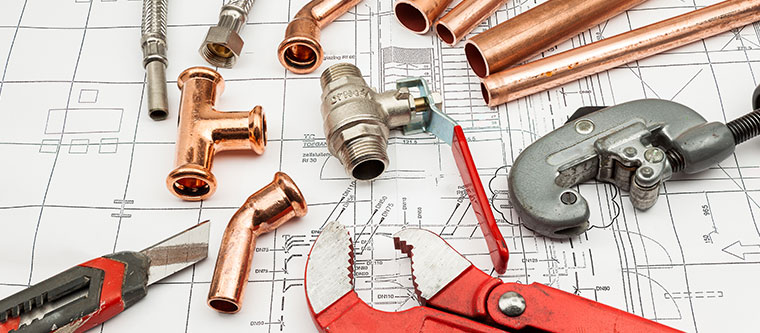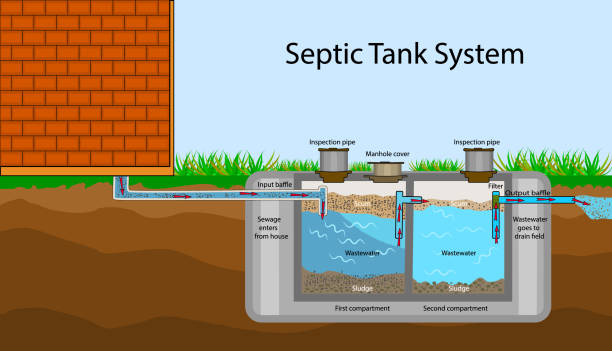How The Anatomy of Your House's Plumbing System Matters
How The Anatomy of Your House's Plumbing System Matters
Blog Article
The content in the next paragraphs about The Inner Workings of Your Home's Plumbing is truly interesting. Read it for your own benefit and see what you think of it.

Understanding how your home's pipes system functions is necessary for every single house owner. From supplying tidy water for drinking, cooking, and bathing to securely getting rid of wastewater, a well-maintained plumbing system is essential for your household's wellness and convenience. In this thorough overview, we'll discover the detailed network that comprises your home's plumbing and offer tips on upkeep, upgrades, and managing typical problems.
Introduction
Your home's plumbing system is more than just a network of pipelines; it's an intricate system that ensures you have access to tidy water and reliable wastewater removal. Knowing its parts and just how they collaborate can help you stop expensive repair services and make certain every little thing runs efficiently.
Basic Components of a Pipes System
Pipes and Tubes
At the heart of your pipes system are the pipelines and tubing that carry water throughout your home. These can be constructed from different products such as copper, PVC, or PEX, each with its benefits in terms of toughness and cost-effectiveness.
Components: Sinks, Toilets, Showers, and so on.
Fixtures like sinks, toilets, showers, and bath tubs are where water is utilized in your house. Comprehending how these components connect to the pipes system assists in detecting troubles and planning upgrades.
Shutoffs and Shut-off Points
Shutoffs control the circulation of water in your plumbing system. Shut-off shutoffs are important during emergencies or when you require to make repair work, allowing you to isolate parts of the system without interrupting water circulation to the entire residence.
Supply Of Water System
Main Water Line
The major water line connects your home to the metropolitan supply of water or a private well. It's where water enters your home and is dispersed to various fixtures.
Water Meter and Stress Regulator
The water meter procedures your water usage, while a stress regulatory authority guarantees that water moves at a safe pressure throughout your home's pipes system, avoiding damages to pipelines and components.
Cold Water vs. Hot Water Lines
Comprehending the distinction between cold water lines, which provide water directly from the primary, and warm water lines, which lug heated water from the hot water heater, aids in troubleshooting and planning for upgrades.
Drainage System
Drain Pipes and Traps
Drain pipelines lug wastewater away from sinks, showers, and commodes to the sewer or septic system. Traps protect against drain gases from entering your home and additionally trap particles that could cause blockages.
Ventilation Pipes
Air flow pipelines allow air into the drainage system, stopping suction that can reduce water drainage and trigger traps to vacant. Appropriate air flow is crucial for preserving the stability of your pipes system.
Value of Appropriate Water Drainage
Making sure correct drain stops back-ups and water damages. Regularly cleansing drains pipes and maintaining catches can avoid costly repair services and expand the life of your plumbing system.
Water Heating Unit
Sorts Of Water Heaters
Hot water heater can be tankless or traditional tank-style. Tankless heaters warm water as needed, while storage tanks save heated water for prompt use.
Updating Your Pipes System
Factors for Upgrading
Upgrading to water-efficient components or changing old pipelines can improve water high quality, minimize water bills, and boost the worth of your home.
Modern Pipes Technologies and Their Advantages
Discover technologies like smart leak detectors, water-saving toilets, and energy-efficient hot water heater that can save cash and lower environmental effect.
Price Considerations and ROI
Determine the ahead of time expenses versus lasting financial savings when taking into consideration pipes upgrades. Many upgrades pay for themselves with minimized energy bills and fewer repair services.
How Water Heaters Connect to the Plumbing System
Recognizing just how hot water heater attach to both the cold water supply and warm water circulation lines aids in identifying concerns like insufficient warm water or leakages.
Upkeep Tips for Water Heaters
On a regular basis flushing your water heater to eliminate sediment, checking the temperature level settings, and evaluating for leakages can prolong its life expectancy and boost power effectiveness.
Usual Pipes Concerns
Leakages and Their Causes
Leaks can occur because of aging pipes, loosened installations, or high water stress. Attending to leakages quickly prevents water damage and mold growth.
Blockages and Obstructions
Blockages in drains pipes and bathrooms are typically caused by flushing non-flushable products or a build-up of oil and hair. Using drain displays and being mindful of what drops your drains can avoid blockages.
Indicators of Pipes Troubles to Watch For
Low water pressure, sluggish drains, foul odors, or uncommonly high water expenses are indicators of possible pipes problems that need to be addressed immediately.
Pipes Upkeep Tips
Normal Inspections and Checks
Schedule annual plumbing evaluations to catch issues early. Look for indicators of leaks, corrosion, or mineral buildup in faucets and showerheads.
DIY Upkeep Tasks
Basic tasks like cleaning faucet aerators, checking for toilet leaks using color tablet computers, or shielding revealed pipelines in cool environments can protect against significant plumbing issues.
When to Call a Professional Plumbing
Know when a plumbing problem needs professional knowledge. Attempting complex repairs without proper expertise can bring about even more damages and higher repair costs.
Tips for Minimizing Water Usage
Easy habits like fixing leaks quickly, taking shorter showers, and running complete tons of laundry and dishes can preserve water and reduced your utility bills.
Eco-Friendly Pipes Options
Take into consideration sustainable pipes products like bamboo for flooring, which is durable and environmentally friendly, or recycled glass for countertops.
Emergency situation Readiness
Steps to Take Throughout a Pipes Emergency
Know where your shut-off shutoffs are located and how to switch off the water system in case of a burst pipeline or significant leak.
Relevance of Having Emergency Situation Contacts Helpful
Keep call info for local plumbers or emergency services conveniently available for fast reaction during a pipes crisis.
Ecological Effect and Preservation
Water-Saving Components and Home Appliances
Installing low-flow taps, showerheads, and toilets can dramatically minimize water usage without giving up performance.
Do It Yourself Emergency Fixes (When Relevant).
Momentary fixes like utilizing duct tape to patch a dripping pipe or putting a bucket under a dripping tap can minimize damage till an expert plumbing professional arrives.
Final thought.
Comprehending the composition of your home's pipes system empowers you to maintain it successfully, saving money and time on fixings. By following regular maintenance regimens and remaining educated about modern-day pipes technologies, you can guarantee your plumbing system operates efficiently for many years to find.
The Anatomy of Your Home s Plumbing System
Understanding the anatomy of your home s plumbing system is essential for any homeowner. It not only helps in identifying potential issues but also facilitates effective communication with professionals when repairs or upgrades are needed. Your home s plumbing system is more than just pipes and faucets; it s a complex network that ensures the efficient and hygienic flow of water in and out of your house. In this blog, we ll dissect the crucial components of your home s plumbing system. For those in Antelope Valley, Brock Plumbing is your trusted partner for all your plumbing needs, ensuring your system functions smoothly and efficiently.
Water Supply System
Main Water Line: This is where your home s plumbing system begins. The main water line connects your home to the public water supply or a private well. Pipes and Shut-off Valves: Pipes distribute water throughout your home. Shut-off valves are crucial for controlling the flow of water and making repairs without shutting off the entire system. Drainage System
Drain Pipes: These pipes carry waste and water away from sinks, toilets, and showers. Vents: Vents allow sewer gases to escape and help maintain proper pressure in the drainage pipes, ensuring efficient flow of wastewater. Traps: Every fixture has a trap, a U-shaped pipe that holds water and prevents sewer gases from entering your home. The most common is the P-trap under sinks. Fixtures and Appliances
Fixtures and appliances are the most interacted with parts of your plumbing system. They include sinks, toilets, showers, dishwashers, and washing machines. Each fixture and appliance has its own supply and drainage connection, ensuring they receive clean water and can dispose of wastewater effectively.
Water Heating System
Your water heater is a crucial component, providing hot water to various fixtures and appliances in your home. It can be tank-based or tankless, with each type having its own set of advantages and maintenance requirements. Regular maintenance is essential to ensure efficient operation and extend the lifespan of the unit.
Sump Pump
In areas prone to flooding or with high water tables, a sump pump is an essential part of the plumbing system. It s installed in the lowest part of your basement or crawlspace and pumps out water that accumulates, preventing flooding and protecting your home from water damage.
Septic System
Homes that are not connected to a municipal sewer system have a septic system and an underground wastewater treatment structure. Understanding how to maintain your septic system is crucial to prevent backups, odors, and early system failure.
Conclusion
Your home s plumbing system is a complex and essential network, ensuring the efficient and hygienic flow of water in and out of your property. Understanding its key components helps in maintaining it properly and identifying issues before they escalate into major problems. For residents in Antelope Valley, Brock Plumbing is dedicated to providing top-notch services, ensuring that every part of your plumbing system is in perfect working order. Trust our team of professionals to handle all your plumbing needs, ensuring your home remains comfortable, safe, and well-maintained.
https://brockplumbinganddrains.com/blog/the-anatomy-of-your-homes-plumbing-system/

Do you enjoy more info about The Inner Workings of Your Home's Plumbing? Put a remark directly below. We will be happy to see your responses about this write up. We hope that you visit us again in the near future. Feel free to pause to share this blog posting if you enjoyed it. We treasure reading our article about Understanding Your Home's Plumbing Anatomy.
Visit My Web Page Report this page